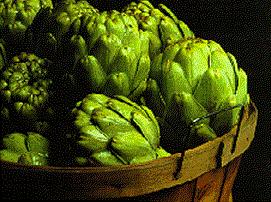It’s been a hot and steamy Independence Day weekend so far. When we entertained family last night I wanted to prepare something light and garden-fresh to transition into dinner. With the first crop of our Brassica oleracea var. italica succession crop ready to eat, we opted for a chilled dairy free broccoli soup.

Let’s begin at the beginning. We grow several varieties of broccoli (Brassica oleracea var. italica) under row covers in 2-3 succession plantings (and/or transplanting) to ensure vibrant, pest free, flavor and nutrient rich abundance. So. Much. Green.

For steaming and eating hot, chopping into crudités and enjoying cold with hummus or dip, juicing into ultra-green magic potion, and puréeing into a refreshing summer soup, broccoli is one of our vegetable garden all stars.

Green perfection! The massive organic broccoli florets in the photo above overshadow the diminutive cluster of hammocks in the distance. I enjoy the contrast (and the rightful reign of this nutrition superhero!)

In the photo above a pair of colorful companions (radishes for crudités and yellow summer squash to be thinly sliced on the mandolin and mixed into a green bean salad with vinaigrette), harvested during the same veggie garden excursion, are washed and standing by. Technicolor flavor bombs ready for action!

And speaking of flavor, there are a pair of hidden-but-not-secret ingredients with which I complemented this chilled dairy free broccoli soup. Garlic scapes and spring onions from our Full and By Farm share, sautéed in olive oil to soften the fibers and release the savory deliciousness were then tossed into a blender and puréed. Liquified, really, to ensure it mixes with the steamed and puréed broccoli and the boiled and puréed potatoes.

What do I miss. Ah, right, the dairy free twist. Obviously sautéing in olive oil rather than butter is the first step, and then thinning the blended soup with a non-dairy alternative. My go-to would be unsweetened (and no vanilla) macadamia milk, which would’ve worked perfectly in the soup. But we had none, so I substituted an unsweetened, vanilla-free almond milk. And it worked out pretty well!
A fair amount of chilling is key to develop and meld the flavors, so I moved the pot into the fridge for a little R&R. Once chilled, I whisked and seasoned the chilled dairy free broccoli soup with some lemon juice, celery, salt, and white pepper. Tada! So refreshing.




































